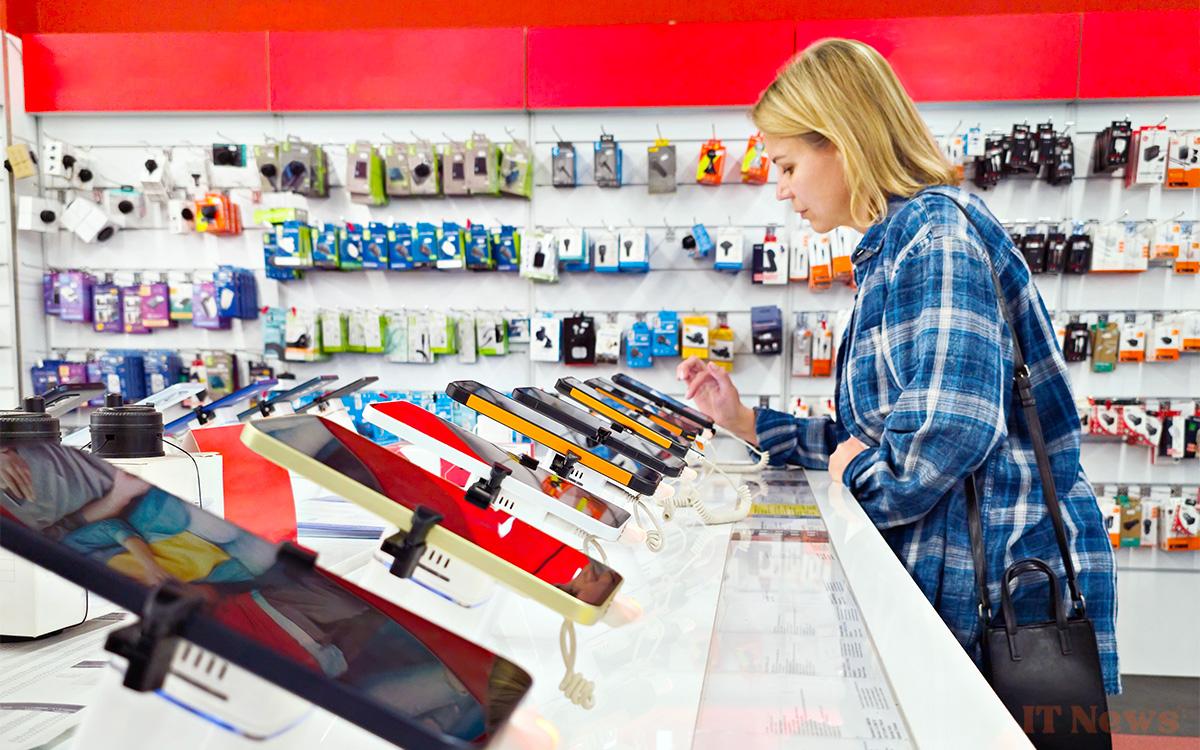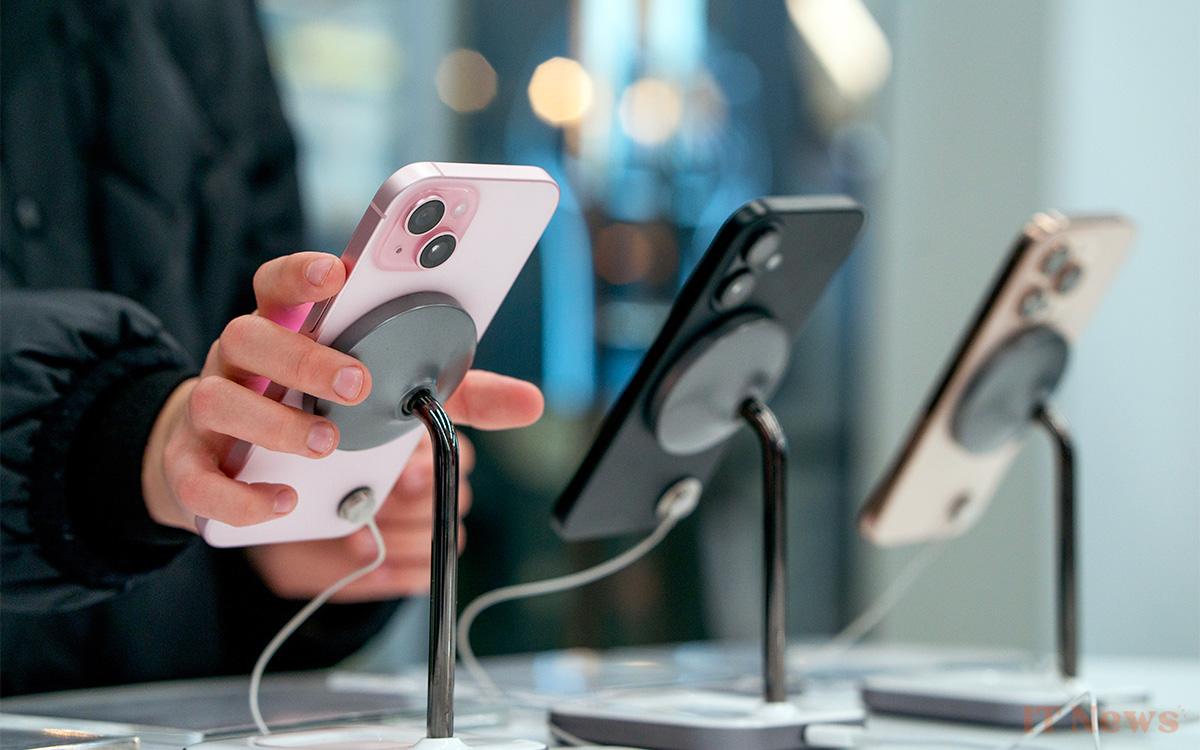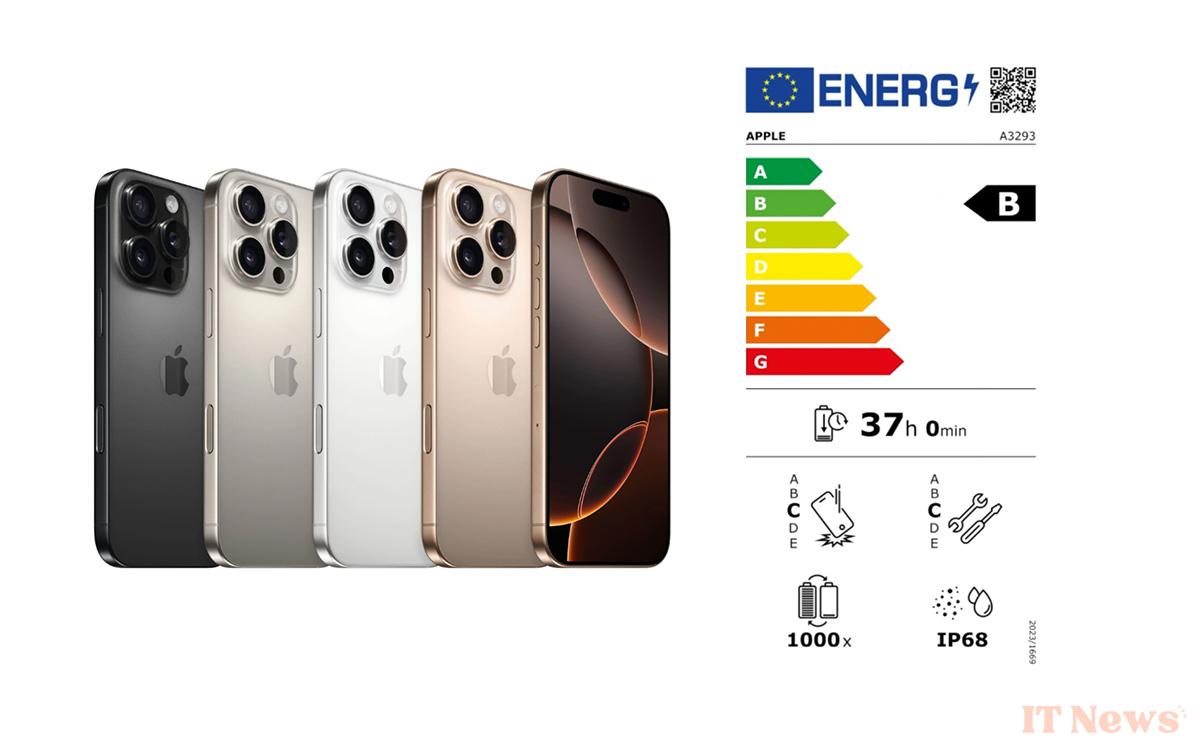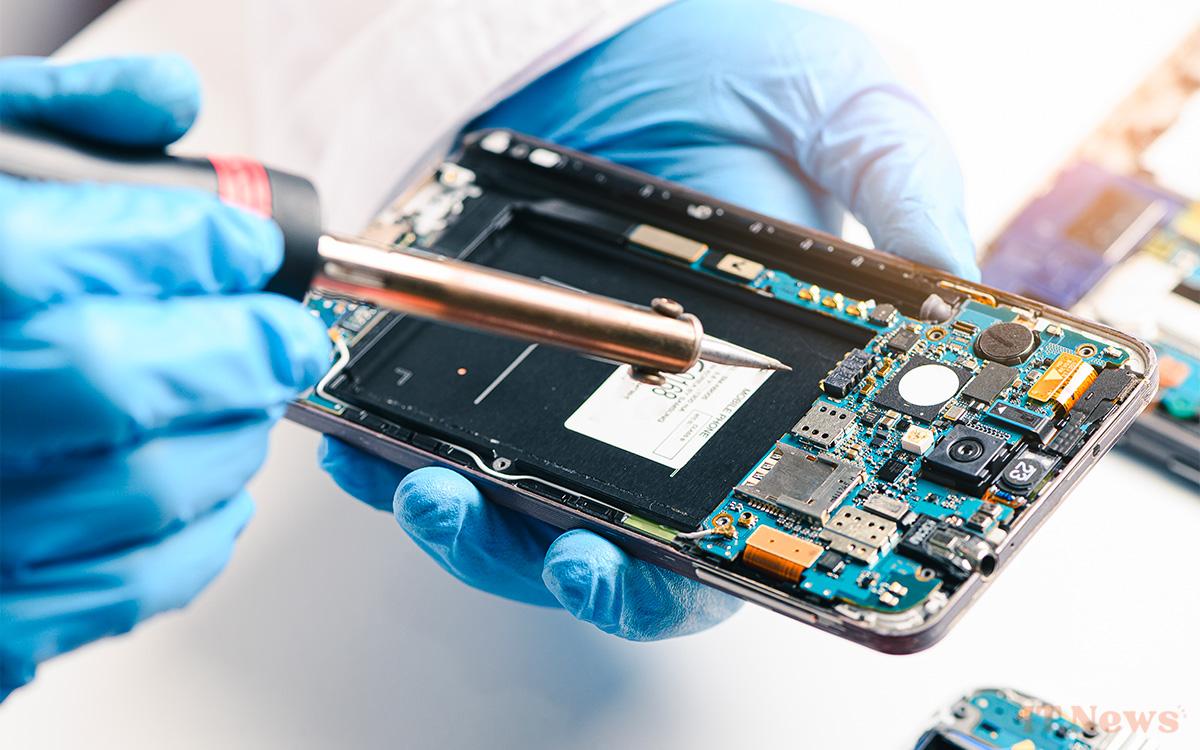From June 20, 2025, all smartphones and tablets sold in France will now display a brand new energy label. Much more comprehensive than the old repairability index, this document will allow you to make an informed purchase. We explain why.
Since March 1, 2021, there has been something called the energy label. Displayed directly on refrigerators, dishwashers, washing machines, and even TVs/screens, it allows you to quickly consult certain essential information on appliances, such as the energy rating, for example.
Until now, smartphones and tablets sold to the general public were not subject to the display of this sticker, although it is very practical. We therefore had to make do with the sustainability index, which has disappeared since February 2024. For good reason, the European Commission has gone through this and called for the abandonment of the system. Why is this? Because it duplicated a forthcoming mechanism, namely the extension of the energy label to smartphones and tablets.
And precisely, from June 20, 2025, we will therefore be able to find on all smartphones and tablets sold in France this famous redesigned energy label. Let's take a look at what it will change for consumers.
What is this new energy label?
In concrete terms, this energy label will follow the same principle as the one already existing on washing machines and TVs. This will display the energy class, on a scale of A to G (from the most economical/efficient to the most energy-intensive), as well as the annual consumption.
It will be displayed in the form of a sticker in store, or via a QR Code to be scanned in online stores. In this case, users will be redirected to the European EPREL database (European Product Database for Energy Labelling). According to ADEME (the French Agency for Ecological Transition), this label will help “reduce environmental impacts during production and lower acquisition costs for consumers, thanks to a longer lifespan for appliances.” Furthermore, it will be used to quickly identify more virtuous models in terms of energy consumption. “This new regulation thus encourages more responsible consumption, with products designed to last longer, be repaired more easily, and consume less energy,” the government institution assures. src="https://wp-pa.phonandroid.com/uploads/2025/06/ademe-etiquette-energie-.jpg">
What information is displayed?
Obviously, the label will not only provide the DPE. It will also display 6 key pieces of information for all smartphone and tablet buyers. Let's take a look at them together:
- Energy rating:Like what we already find for apartments, this rating, assigned between A and G, allows you to quickly get an idea of a device's performance in terms of energy consumption.
- Battery life per cycle: thanks to this data, users will be able to know the battery life of a device once fully charged (in hours and minutes). Useful for those looking for a durable smartphone and who prefer not to rely solely on manufacturer promises.
- Accidental drop resistance class:if you're a potential Pierre Richard, this rating (between A and E) allows you to know the device's resistance in the event of an accidental drop.
- Battery longevity in number of cycles: here is another very important piece of data for those looking for a device that will last. This is because it indicates the number of full charge cycles you can perform until the battery can no longer reach 80% of its basic capacity. To give you an idea of the lifespan of your smartphone/tablet
- The repairability class: as its name suggests, this rating indicates the degree of repairability of the device (available documentation, disassembly and access, availability and price of spare parts, etc.)
- The dust and water protection rating: it's all in the name, this rating specifies how well your device is protected against dust, splashes or even immersion
A concrete example with the iPhone 16 Pro
Since the energy label is now in force, you can already find it on many smartphones on sale at major French retailers. To give you an idea, we did a search for an iPhone 16 Pro on the Darty website, here is what the label shows:
- Class B in energy consumption
- 37 hours of total battery life on a full charge
- Rating C in repairability (Apple has never been one of the best in this area) and also C in drop resistance
- Up to 1000 full charges before noticing a loss of the original battery capacity
- IP68 protection (Totally dustproof and submersible between 1 and 3 meters deep for 30 minutes)
The new energy label doesn't arrive alone
Note that the new energy label doesn't arrive alone. Indeed, it comes with new obligations for manufacturers set by the European Union. For example, they will now have to comply with new ecodesign requirements. Batteries will have to retain at least 80% of their charge after 800 full charge cycles. But that's not all, here are the other commitments to be kept:
- resistance to accidental drops and scratches
- protection against dust and water
- obligation for manufacturers to make critical spare parts available within 5 to 10 working days and for 7 years after the end of the product's marketing
- ensure software support for the operating system for at least 5 years from the date of the end of the marketing of the last unit of the product
- guarantee unlimited access to professional repairers at any time software or firmware required for repair or replacement operations
Devices that still escape the energy label
At the time of writing, two types of smartphones are not yet covered by this new legislation, namely:
- foldable smartphones like the Galaxy Z Fold 6 or the future Honor Magic V5
- smartphones designed for high-security communication (devices intended exclusively for professionals)
Regarding foldables, the European Commission is already working on an adapted version of the energy label. It should come into force in 2027.







0 Comments